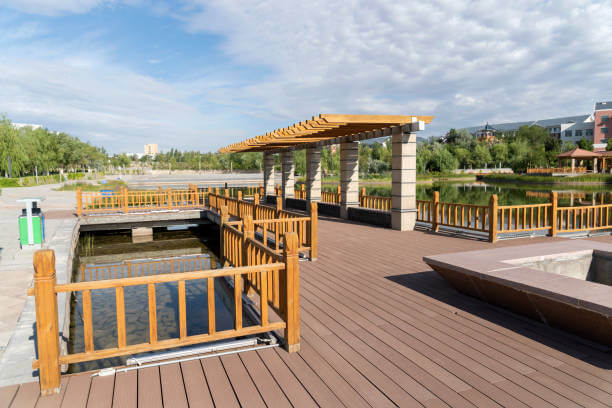
Creating an outdoor deck that withstands the test of time and weather can transform your backyard into a year-round haven. Whether you’re seeking a cozy spot for summer barbecues or a resilient platform to enjoy a morning coffee, understanding the essentials of weather-resistant outdoor decks is crucial. This guide dives deep into materials, maintenance tips, and design considerations that help ensure your deck remains beautiful and functional, no matter the weather.
Why Weather Resistance Matters for Outdoor Decks
Outdoor decks face constant exposure to sun, rain, wind, snow, and humidity, all of which can degrade materials and compromise safety. A deck built without weather resistance in mind may warp, crack, or become slippery and unsafe. Ensuring your deck withstands these elements not only preserves its appearance but also protects your investment and enhances your outdoor lifestyle.
Choosing the Right Materials for Durability
The foundation of any weather-resistant outdoor deck is the material. Traditional wood has a natural charm but requires significant upkeep to resist moisture and pests. Alternatively, composite decking blends wood fibers with plastic to create a surface that resists rot, insects, and fading. PVC decking, made entirely of plastic, offers excellent weather resistance with minimal maintenance.
Pressure-treated lumber remains a popular choice because it is chemically treated to withstand decay and insect damage, though it may require sealing and staining over time to keep water out. For ultimate longevity, consider hardwoods like ipe or teak, which naturally resist weathering but come with a higher price tag.
Design Elements That Enhance Weather Resistance
Weather resistance isn’t just about materials—it’s also about design. Proper drainage is essential to prevent standing water that accelerates damage. Slightly sloping the deck surface ensures water flows off instead of pooling. Using stainless steel or galvanized fasteners prevents rust, while gaps between boards allow for expansion and contraction without warping.
Additionally, installing a quality sealant or protective finish can shield surfaces from UV rays and moisture. Incorporating shading structures, such as pergolas or retractable awnings, can reduce direct sun exposure and extend your deck’s life.
Top 5 Tips for Maintaining Your Weather-Resistant Deck
Maintaining your deck is as important as building it right. Here are five essential practices:
Regular Cleaning: Remove dirt, leaves, and debris to prevent mold and mildew buildup. Use a gentle cleaner suited to your deck material.
Inspect for Damage: Check for signs of rot, cracks, or loose fasteners at least twice a year, especially after severe weather.
Reapply Protective Coatings: Depending on the material, reseal or restain your deck every 2-3 years to maintain its protective barrier.
Prevent Standing Water: Clear drains and ensure no water is pooling on or around the deck surface.
Protect from Pests: For wooden decks, monitor for termites or other insects, and treat promptly if found.
By integrating these habits, you can significantly extend your deck’s life and enjoy your outdoor space in comfort.
Common Questions About Weather-Resistant Outdoor Decks
What is the best material for a weather-resistant outdoor deck?
The best material depends on your budget, climate, and maintenance preferences. Composite and PVC decks offer excellent weather resistance with minimal upkeep, while hardwoods provide natural durability but require more investment upfront.
How often should I reseal or restain my deck?
Typically, sealing or staining is recommended every 2 to 3 years. However, the exact timing depends on your local climate and deck usage. Regular inspection can help you determine the right schedule.
Can I build a weather-resistant deck myself?
While many homeowners take on deck projects, weather-resistant decks require attention to detail in material choice, installation, and finishing. Consulting professionals or referencing trusted websites can ensure your deck stands up to the elements.
How do I prevent my deck from becoming slippery when wet?
Using textured deck surfaces, adding anti-slip coatings, and ensuring proper drainage can reduce slip hazards. Avoid materials that become slick easily, especially in rainy climates.
Is composite decking environmentally friendly?
Composite decking often uses recycled materials and can be a sustainable choice. However, it’s essential to research the brand and product specifics to align with your eco-friendly goals.
Weather-resistant outdoor decks enhance your outdoor living and add value to your home. By carefully selecting materials, designing for weather challenges, and committing to regular maintenance, you can enjoy a beautiful, durable deck all year round. For more inspiration and expert advice, check out the website of Max building designs.
Author Bio
Jane Williams is an outdoor living specialist with extensive expertise in weather-resistant outdoor decks. Passionate about helping homeowners create durable, beautiful spaces, she shares practical advice and design tips through Max building designs. Visit the website to learn more and start planning your perfect deck today.
